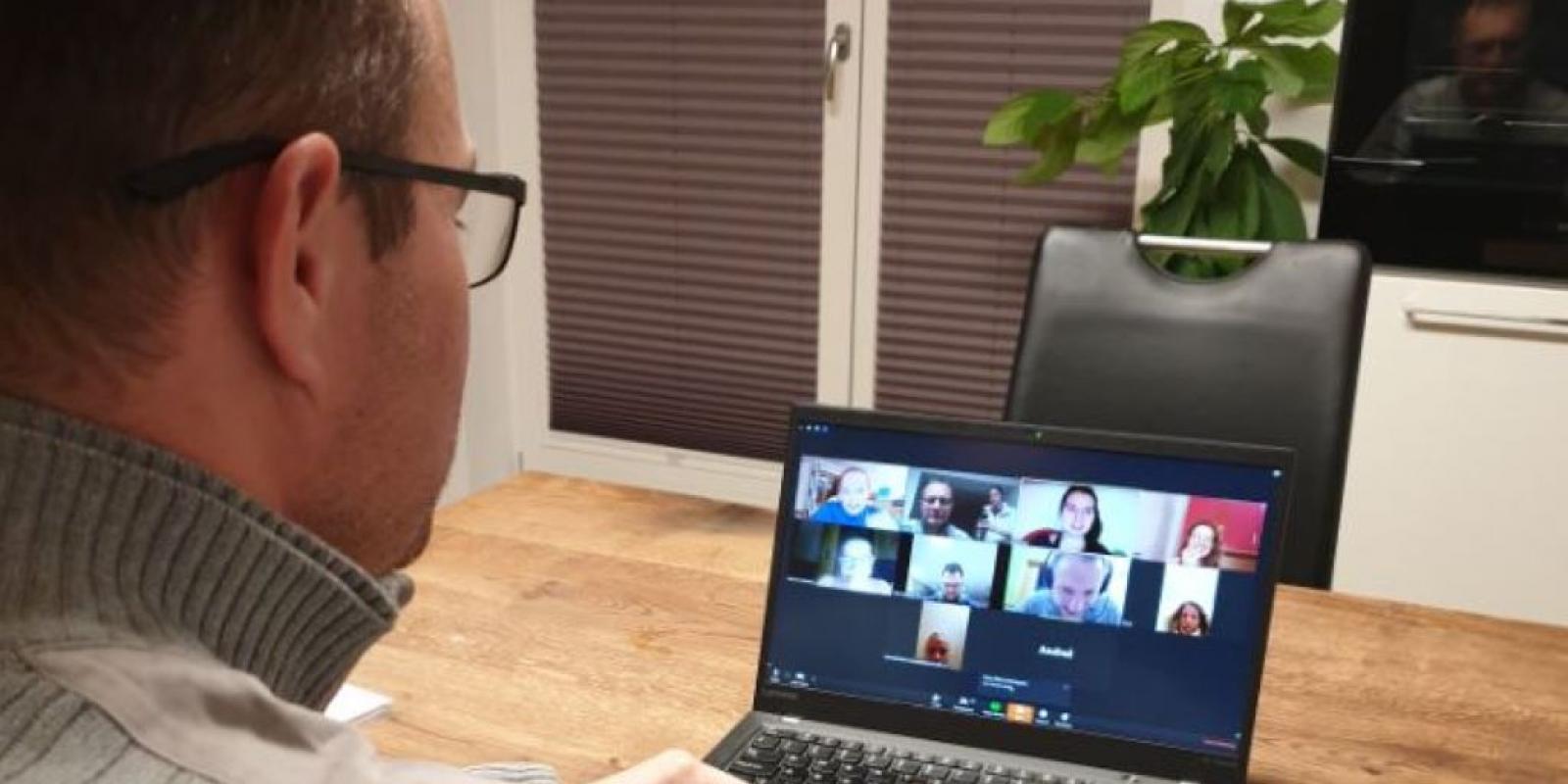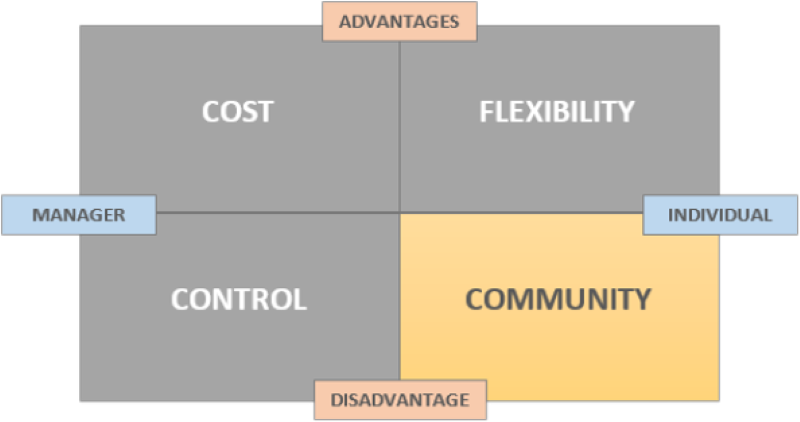
Manage remote teams
10 min
Due to the current situation, many of us are already working from home. And there will be more of us. And with this, new challenges arose. How to replace live meetings with co-workers, with your teams? How to replace morning coffee and chatting?
Just over ten years ago, working from home became a new business trend. Many companies in the field of human resources were quick to try it. For example, in 2009, IBM sold many of its offices around the world for nearly $ 2 billion, sending approximately 40% of its 386,000 employees to work from home. At the time, it seemed like a very good business decision. Soon, however, it turned out that this was not the case. Expectations have not materialized and the performance of the entire organization has fallen sharply. So in early 2017, they reversed their work-at-home policy decisions, re-established offices and brought employees back to the "traditional" work environment. Similar things have happened to many other companies around the world.
Looking for a reason why, experts agree on one thing - working from home raised the productivity of most individuals while reducing the productivity of teams. The synergy between people, that has the greatest impact on the effectiveness of the entire organization, began to disappear. They confirmed that nothing builds a collaborative relationship like the physical presence of people.
Today, we are witnessing a similar situation, except that working from home is not a privilege or our decision, we are forced into it. Managers and teams in corporations that introduced work from home years ago have been prepared and gradually trained to manage remote teams. Now we find ourselves in a situation where most executives are not even close to the task of working with teams that do not sit next to them in the office. When we work in remote teams, relationships slowly cool down, managers lose control, dedication falls, employees are confused and, despite the desire, fail to achieve the efficiency they have had in the office. And that's only in the short term. As a rule, in the long run, confidence in teamwork falls, and consequently, there is a drop in connection and synergy between people.

Working from home has its advantages. In the field of management, this means lower company costs and, in many cases, higher productivity of employees. At the individual level, it means more flexibility when allocating time and energy and adjusting both personal and work responsibilities. Working from home also has several disadvantages. Leaders lose control over the work of their colleagues, and at the level of individuals, they lose their community. This very last segment is a big trap for teams to fall into. When we work from home for a long time, it shows how important this area is. When we lose our morning coffee, joint meals, hanging out in the hallways, celebrating our success ... we lose the most important things that bring people together. In the first weeks of working from home, it doesn't seem necessarily to manage this field. However, it is important and the consequences of neglecting social contacts are only evident in the long run. People are social beings and we need human connections.
To avoid getting caught in this trap, here are five things to look out for and some solutions that can help you:
1. Maintaining a common identity
Working from home reduces the sense of a shared identity, which in turn affects the collaboration between team members. The feeling of me against everyone else, reduced collective intelligence, increased number of covert conflicts and less successful searches for common solutions are only some of the consequences of losing our shared identity.
Solution for Remote Teams # 1: Even more emphasis should be placed on the shared cause. If you haven't already, make clear the purpose of your team. What impact does your work have on your clients.
Solution for Remote Teams # 2: One of the most important tools for team building, both remotely and otherwise, is the goal. Make sure the team has a clear common goal that is both challenging and important. Repeat the common goal at each meeting and combine the individual tasks into a common picture. Everyone needs to understand how they (and everyone else) contribute to this goal.
2. Declining awareness of the knowledge of others
When working remotely, as a rule, you become less aware of your coworkers’ knowledge and competences and vice versa. Understanding not only what we do, but also how and why we do it is one of the key drivers of coordination and collaboration. The more we are aware of this, the less time we lose by coordinating around the little things.
Solution for Remote Teams # 3: Utilize team meetings to highlight good practices (how) and raise awareness of the broader perspective (why). Connect individuals if you think they need to collaborate on a task. Select tasks and projects and assign them to 2 or 3 team members, although only one could probably solve them.
3. Maintaining human contact
Dehumanization can occur in virtual teams. Too often, we forget that on the other end of our screen, there are people just like us, with their own personality traits and characteristics that we must take into account if we want to cooperate successfully.
Solution for Remote Teams # 4: Have a picture of your team members in your home office. Research has shown that teams that have a picture of their members before their eyes at all times are significantly quicker and more likely to resolve conflicts.
Solution for Remote Teams # 5: Building trust on a personal level is important for every team, even more so when teams are working remotely. Teams can only work well if they have a high enough level of trust between team members. However, trust is formed through a great deal of human contact, often through informal meetings. We need to introduce trust building into virtual teams with planned activities, regular relaxed meetings, where you can share personal news (with coffee, tea), planned informal conversations for two (grab a virtual coffee). Consider other possible practices (such as birthday celebrations, weekend sharing of cookbooks, etc.) or remote teambuilding programs run by trained agencies.
4. Changed communication channels
Moving from normal to virtual team also changes the channels through which we communicate. This confuses team members. Some people get used to it quickly, while others have a lot of technical difficulties and trouble getting used to a new way of working. This causes a lot of bad mood and, above all, loss of efficiency.
Solution for Remote Teams # 6: Think carefully about which communication channels you need. Take your time and talk to your team members about the purpose of each channel. If it is a change, it is important to introduce it gradually and to ensure that everyone finds themselves in a new environment. Identifying “masters” of new channels who are in charge of helping others is often a good solution.
5. Quick and constructive feedback
In the office, the feedback is usually immediate. In remote teams, however, this time can be greatly extended or even lost. In addition to feedback on work, feedback on the well-being is also important. This needs to be consciously acquired, because when working remotely, we lose non-verbal communication and hallway conversations, which give us the opportunity to react before a major challenge arises.
Solution for Remote Teams # 7: 1-on-1 meetings are key to gaining a sense of team members' well-being and giving constructive feedback with the goal of developing individuals, especially from the perspective of empowering and making the right decisions.
Dani Polajnar, CEO, TBA and dr. Luka Jan, Program director, TBA






